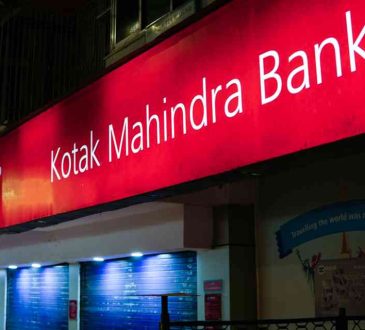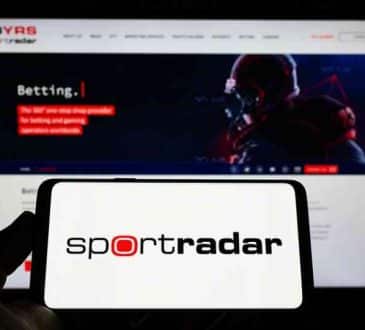How Do Leaders Know Which ERGs They Need?

When ERGs work, they work well in holistic ways. Not only do they build up the visibility of employees who might otherwise be “hidden,” but they enhance the overall corporate culture. They can also be beacons to incoming talent who like the idea of working for an employer that acknowledges, accepts, and supports their unique characteristics. Since ERGs have such a strong alignment with DEI programs, they can often inform a company’s DEI strategies in constructive ways.
Employee resource groups (ERGs) have moved from nice-to-have to must-have corporate assets. As McKinsey reports, nine out of 10 Fortune 500 organizations have ERGs. And smaller businesses are following suit. Yet even leaders who support the ideas of ERGs aren’t always sure which ERGs they need or — perhaps most importantly — how to make sure ERGs have a significant impact.
Need a refresher on the structure of ERGs? They consist of employees who share the commonality of identifying or allying with historically underrepresented or marginalized groups. For instance, a business might have an ERG devoted to Latinx workers, members of the LGBTQ+ community, or people whose lives have been touched by a disease like cancer. The ERG becomes a safe space for employees to relate to each other and feel a deeper sense of purpose and belonging on the job.
When ERGs work, they work well in holistic ways. Not only do they build up the visibility of employees who might otherwise be “hidden,” but they enhance the overall corporate culture. They can also be beacons to incoming talent who like the idea of working for an employer that acknowledges, accepts, and supports their unique characteristics. Since ERGs have such a strong alignment with DEI programs, they can often inform a company’s DEI strategies in constructive ways.
Of course, this leads to obvious and bigger questions. If you’re a leader of a company without ERGs, where do you start in terms of their development? How do you know which ERG types are most needed within your business? Once you launch your ERGs, what measures will keep them not just running but thriving?
The answers aren’t simple or the same for every company. Nevertheless, there are a few best practices and steps that you can take to ensure that your ERGs become robust, rich parts of your organization.
- Take a survey of your employees.
Rather than attempting to predict which ERGs will be best suited for your worker population, go right to the source. Create and send out a company-wide survey, or just hold town halls to find out what kinds of ERGs your employees want. This is the most dependable way to make sure you have your finger on the pulse of what your worker base cares about.After you receive feedback, you should have a more detailed picture of ERGs that belong at your company. You aren’t obligated to launch all possible ERGs immediately, but strive to offer multiple ones so you have a lot of coverage. In some cases, you may find that select employees will want to join more than one ERG due to their intersectionality between groups.
Individual racial and ethnic diversity rose significantly in the United States between 2010 and 2020. Consequently, you shouldn’t be surprised if all your people — maybe including you — have a kinship with two, three, or four ERGs.
- Offer full, authentic leadership support.
From the very moment that you announce your intention to start ERGs, put your full support behind them as a leader. This doesn’t just mean vocal support. It means all types of support, including funding.Why offer compensation for employees who volunteer to lead up ERGs? For one, you’re showing that you see them and that you value their contributions. Secondly, you’re ensuring that the ERGs don’t begin to dissipate. It’s harder to keep an ERG going if leaders feel burned out and unappreciated. Third, ERGs need to be able to offer outreach, networking, and other opportunities to connect inside and outside the group.
How much you earmark for each of your ERGs will depend on what you can spare. Be careful not to accidentally offend ERG leaders and members, though. As noted by SHRM, one participant at an HR convention lamented that their company “spent more on the bagel budget than the ERG budget.” Don’t let that be you. Put real money into ERGs and you’ll get real efforts out of them.
- Strive to connect your ERGs and DEI teams.
The connection between ERGs and DEI teams seems intuitive and natural. Why, then, do so many businesses see these groups in separate lights? As Nicole Simpson, the U.S. DEI Director for creative marketing agency RAPP explains, “ERGs can be an important piece of the engine driving your organization to a more equitable place. They are not just a nice-to-have or a vehicle for one-off cultural events like Black History Month or Pride Month.”Simpson has seen first-hand how powerful ERG and DEI groups can be when they work together, and it’s part of the reason she pushes hard for RAPP to be innovative in both ERG and DEI realms. At one of her former employers, the Black talent ERG had a conversation with the executive leadership team about what the Black talent at the company needed. Simpson credits this type of healthy give and take for the resulting programs and policy changes that improved the Black talent experience at the organization.
Both ERGs and DEIs do a lot of exhausting work. By linking them, you can help lower the chances that they’ll unknowingly duplicate efforts or end up hosting competing events and campaigns.
If you like the idea of doing more for the people you’ve hired, bring them the opportunity to join a corporate-backed ERG. In return, they’ll bring more of themselves to work — and bring your organization all the advantages that come from a loyal, engaged workforce.
Written by Rhett Power.
Have you read?
Honor Gordon Moore: Unite Across Party Lines to Fuel Innovation by Lisa Gable.
CEO’s and Accelerators with design thinking readiness, challenging assumptions by Prof. (Dr.) Manoj Joshi.
Enhance Your Business’s Visual Identity with High-Quality Stock Images.
CEO Spotlight: Interview With Yaroslav Shakula: YARD Hub CEO.
CEO Spotlight: Don Lindsay Discusses His Biggest Accomplishments as CEO of Teck Resources.
Add CEOWORLD magazine to your Google News feed.
Follow CEOWORLD magazine headlines on: Google News, LinkedIn, Twitter, and Facebook.
This report/news/ranking/statistics has been prepared only for general guidance on matters of interest and does not constitute professional advice. You should not act upon the information contained in this publication without obtaining specific professional advice. No representation or warranty (express or implied) is given as to the accuracy or completeness of the information contained in this publication, and, to the extent permitted by law, CEOWORLD magazine does not accept or assume any liability, responsibility or duty of care for any consequences of you or anyone else acting, or refraining to act, in reliance on the information contained in this publication or for any decision based on it.
Copyright 2024 The CEOWORLD magazine. All rights reserved. This material (and any extract from it) must not be copied, redistributed or placed on any website, without CEOWORLD magazine' prior written consent. For media queries, please contact: info@ceoworld.biz
SUBSCRIBE NEWSLETTER








